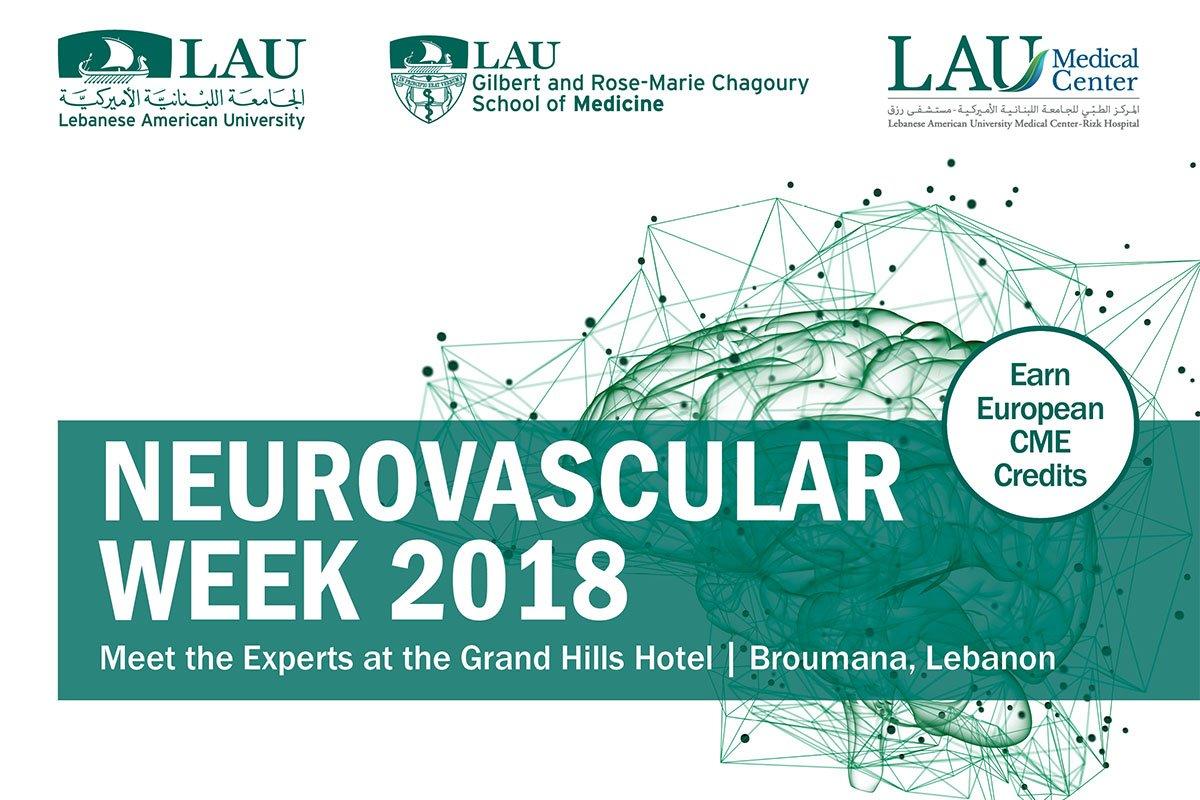Optimal Treatment in Aneurysm Repair
Multidisciplinary team successfully treats a challenging case of intracranial aneurysm in a streamlined surgical procedure.
When the 36-year-old patient was admitted to LAU Medical Center-Rizk Hospital with an intracranial aneurysm earlier this year, he knew he was in good hands. Prior consultations with the doctors had reassured him that he would be well looked after by an integrated comprehensive team of highly qualified specialists. This multidisciplinary patient-centered approach distinguishes LAU’s Gilbert and Rose-Marie Chagoury School of Medicine and its teaching hospital.
“I was impressed by the coordination between the doctors,” he said. “They inspired confidence and hope that if one treatment didn’t work, they would find another solution.”
An intracranial aneurysm is a swelling, or ballooning, of a blood vessel in the brain, which, if left untreated, can rupture leading to a stroke, impairment or death. While regular aneurysms are repaired either through surgery or neurovascular treatment, this was a particularly complex case by virtue of its size – just over two-and-half centimeters – location, and architecture.
“The aneurysm was abnormal and presented a maximal challenge for medicine,” says attending neurosurgeon Dr. Ibrahim Saikali, “It was not amenable to surgery alone or neurovascular treatment alone. So we had to team up and pool our skills to cure the patient.”
The successful procedure over two stages, in the operating room and the angiography suite, was the first of its kind in Lebanon. “Usually, the combined effort [of physicians] is not done in the same setting, same anesthesia and same day,” says Saikali.
Aside from Saikali, the comprehensive team of specialists included neuro-interventional radiologists Dr. Michel Mawad – also dean of the School of Medicine – Dr. Raghid Kikano and Dr. Anis Nassif, vascular surgeon Dr. Joseph Naoum, and anesthetist Dr. Krystel Malek.
The first step was to ensure continuous blood supply to the brain, until such time as a coil or stent was inserted into the artery to block the blood flow into the aneurysm. “Dr. Naoum harvested a radial artery from the patient’s forearm,” explains Saikali, “which I micro-sutured to the common, carotid, artery, and a small vessel in the brain.”
Whereas normally a patient would then be discharged, and readmitted after a period for aneurysm repair, the patient in this instance – still under general anesthesia – was immediately moved to the angiography suite. Once an angiogram had confirmed that the graft had taken, Mawad, Kikano and Nassif proceeded to occlude the aneurysm and parent vessel with coils and stents.
The anesthetist’s role in these two complex procedures was to manage the patient’s response to surgery while providing hemodynamic stability – in other words, stable blood flow – and optimizing the surgeon’s conditions for a successful outcome. “This fine tuning throughout anesthesia requires sharp and delicate decision-making to the minute and to the second,” says Malek.
Not only did this seamless coordination immediately ensure the patency of the graft and minimize any risks, but it also spared the patient several hospital visits, protracted treatments, and undergoing general anesthesia more than once.
Such innovation and collaboration are crucial to ensuring timely treatment for the patient and avoiding preventable complications. “The best stroke you can have is the stroke you have never had,” says Mawad, himself a world-renowned specialist in neurology and cerebrovascular disease.
Under his auspices, the School of Medicine launched in March the first Comprehensive Stroke Center in Lebanon and the region, dedicated to the early diagnosis and management of acute ischemic stroke.
The state-of-the-art center, located at LAU Medical Center-RH, and staffed with an integrated team of neurologists, interventional surgeons, critical care specialists, anesthesiologists, neurosurgeons and physiotherapists, meets the vital need to avoid the risk of avoidable death or disability as a result of a stroke.
Aneurysms and strokes are the subjects of the School of Medicine’s first international symposium this month, which will host prominent experts in the field. The event comprises a course on functional neurovascular anatomy by the World Federation of Interventional and Therapeutic Neuroradiology (WFITN) and an International Symposium of Neurovascular Disease, both of which have been granted CME credits by the European Accreditation Council for Continuing Medical Education (EACCME).
